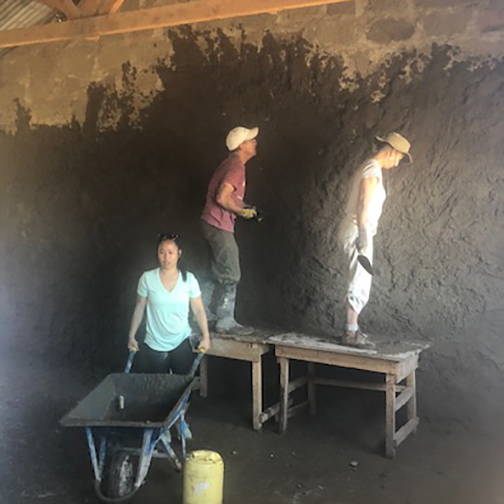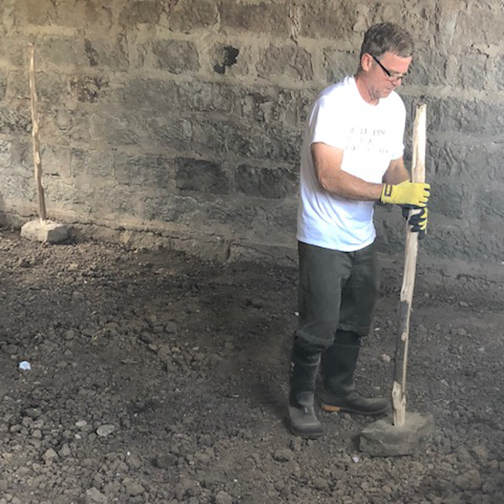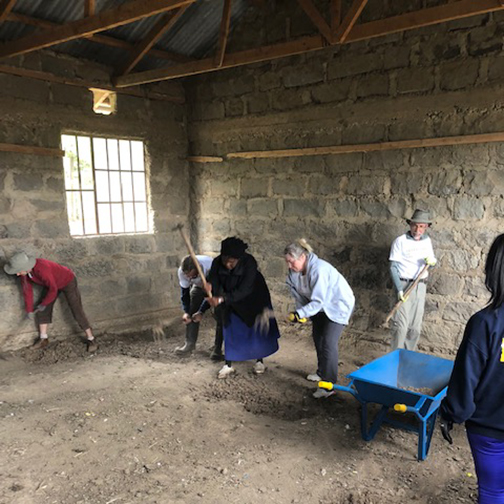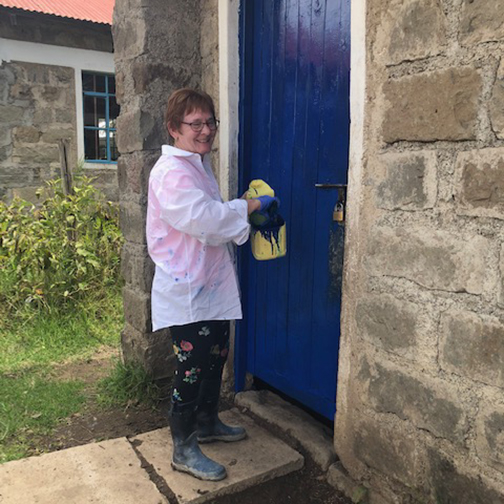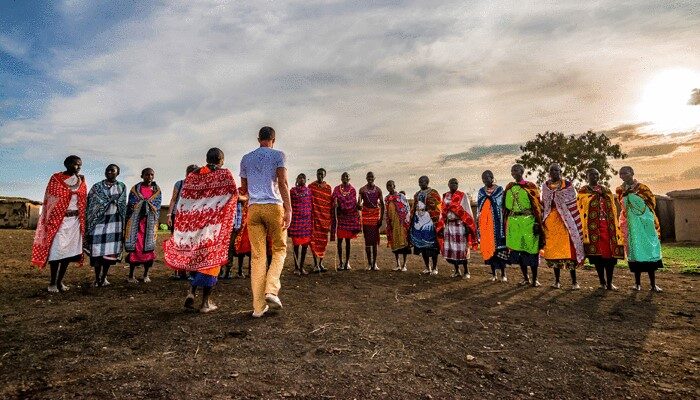
Posted in Kenya on November 14, 2018
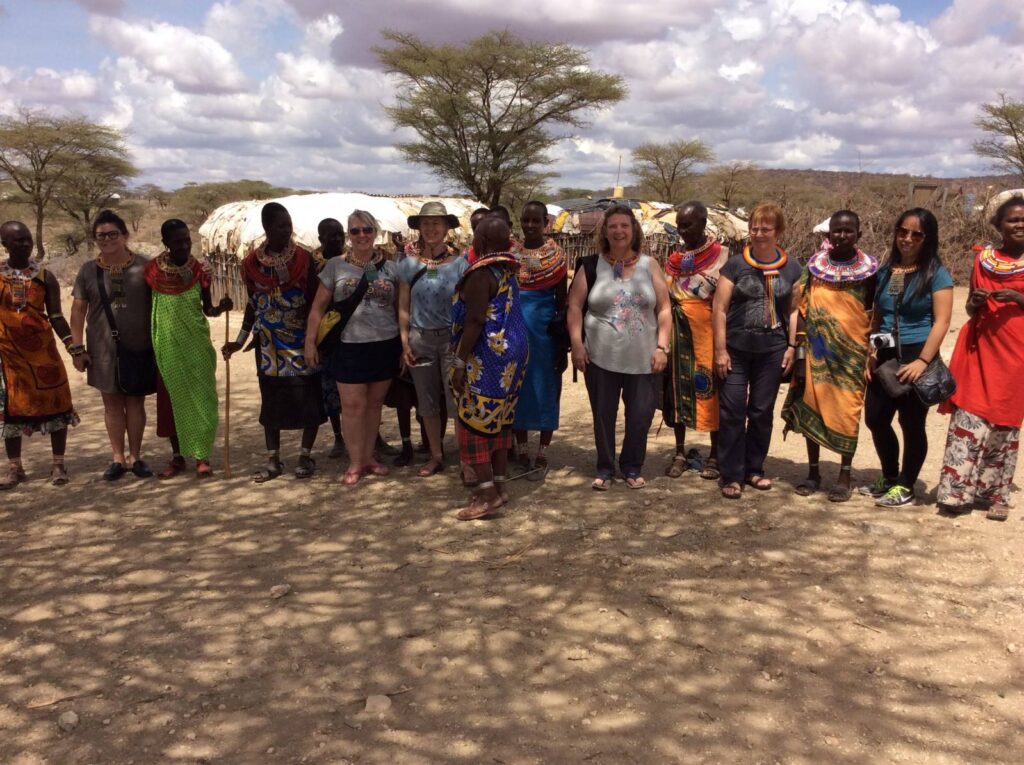
Reflections on our first few days in Kenya
We met our 8 new and old DWC friends (Jim, Cathy, Alicia, Terri1, Terry2, Jen, Chris and Russ) at YVR where we began a long and happily uneventful day and a half long journey to Kenya. Our first test was at the Kenya border where a very fast and efficient system accepted our on line or on site visa applications. 23 bags made it with only Terri 1’s taking a few extra days. We were greeted at the airport by our friendly and informative drivers including our host David who will be with us for the whole trip.
We all got settled in to the hotel where we met DWC team member #9 Deb. We all crashed early with our first instructions from Jen to be ready to go by 10am. No need to set an alarm I thought……oops Russ and Chris worked on our first impressions by sleeping in! After a ‘get ready real quick’ we just made the bus by 10! On our way we stopped at the David Sheldrick Wildlife Trust Centre where we saw young orphaned elephants and learned of their reintroduction into the wild.
On arrival at the Mount Kenya Lodge we were met by our delightful and accommodating host Lucy our cook John and his helper Stephen. Our meals have been delicious!
Everyday on the site we have met interesting and friendly Kenyans. The Aguthi Primary School has over 230 students who are currently on break. Many children have visited us including Ian who Chris and I are calling our Kenyan son. The kids are so friendly, curious and helpful it makes the work day a real treat.
Teachers and parents are all taking turns volunteering with us. Hard working Agnes and Johnson, boss man and grade 1 teacher Samual, the mad shoveler Purity, playful Margaret, and Mr. Robinson and the school guard and Masai Manyas. Dagwood and Peter are our professional plasterer and trainers and Bernice who is our Access rep who besides overseeing the project is about to have child number 3 (next week)
We have had many conversations with our hosts including a hilarious exchange with Mr. Robinson, the music teacher who claims to be an expert dowry negotiator. He placed various ‘goat dowry’ values on our team members, all to great laughs from our whole team. He also explained how valuable our work is raising the floors as many children become ill from dampness, dusts and the resulting fleas and parasites that live in the dirt floors.
Another best part of the first week is getting to know our new hardworking DWC friends from the outdoor enthusiasts Cathy and Jim, the straight shooting Terri1 and Terry2, our token youth amongst oldies! and sarcastically funny Alicia, and Deb who is hilarious and who knew we needed an interior designer in Africa! To our practical and information seeking leader Jen. We have had so many fun and serious conversations over meals games and during our work day making our time here completely enjoyable.
Russ Carmichael, DWC Volunteer
What the world needs more of…
Our volunteer trip to Naro Maru, Kenya, is behind us now and we are reminded of the value of the cultural exchange that is such an integral part of Developing World Connections.
A few of us on the team shared the experience of some family, friends and acquaintances questioning the efficacy of sending people to work on site in needy third world communities as opposed to simply sending money to the community organizations. An argument is that the money used for volunteers’ travel and accommodation could be better used to fund just the work. Another argument is that the people themselves should do the work to better their own communities. Our experience here has helped to clarify the reasons why it is so important that the volunteers live, work and interact with the communities.
Clearly, the DWC volunteers benefit from first hand exposure to the people, the environment and the culture in order to deeply appreciate how other people live. The communities, as well, gain some understanding of our culture through interactions with us during the work. Essentially, however, we all discover that there is really very little difference between us – isn’t that what the world needs more of!
On this project, it was so heartening to see parents coming every day to help. The host partner sets out the project work but as the work progresses, the volunteers have opportunities to find additional work that enhances the community. For example, during this project which entailed cementing floors, plastering and painting the walls of 3 classrooms in a rural school, members of the volunteer team decided to paint doors and window frames, clean windows and clean classrooms.
The needs of the school kitchen became apparent and efforts are underway to raise funds to improve this facility. One of the parent volunteers who worked continuously during the classroom project is now going to be hired to do the labour for the kitchen project. This would not have happened had not the team been working in the community with the local population. Our team leader found out the cost for each student for a year of school – $43.00 USD. Team members intend to return home and recruit family and friends to sponsor a child at this school. The personal connection to the school and the reassurance that the school and community are reliable encourage this sponsorship.
While working in the community, the team members are housed and fed locally. As well, as often happens after a DWC project is finished, many of the team members tour the country – injecting money into the local economy. Our group experienced the iconic African Safari and the warm hospitality of the Kenyan people.
A DWC volunteer can, therefore, confidently explain to those who may question why travelling to a community in need to help is more beneficial than simply funding a project to be completed by locals. There are so many opportunities for far greater cultural and economic exchanges that spin off from the project itself and “develop world connections”.
Cathy, DWC Volunteer
Kenya, 2018
Local Tiny Humans
Everyone always talks about the “poor kids in Africa who don’t have anything”, or “think about the kids in Africa” when comparing our lavish North American lifestyles. One often sees videos or pictures of them looking sad in a doorway of a tin house. People often feel sorry for them because they do not have a lot and rightfully so. However, until you meet these children one may never know the contentment and happiness they have with minimal material goods.
This trip to Kenya was during the children’s offseason of school, therefore they were not in attendance whilst we were working. This however, did not stop us from having many frequent and reoccurring interactions with the local tiny humans. When the group arrived at the worksite, the children were returning their schoolbooks and collecting exam marks. They were very curious and excited about the work we would be doing and why a bunch of strange people were at the school; what was the commodity?
Initially, they just stared from a far, watching what we were doing. At the time, I believe we were digging up the floors. Eventually we introduced ourselves, we tried to do it in Swahili, however they didn’t really understand the message we were trying to get across. Luckily, they had varying levels of English. Watching teammate Russ, attempt to ask “what is your name” was quite entertaining for everyone. However, after we successfully introduced ourselves, they began to warm up to us and we developed relationships with a core group kids who would frequent the worksite. Amongst the group were Dennis, Cedric, James, Peter, Blessing, Ian, Kim and Larice. Language was a bit of a barrier over all, however we got along just fine.
The children were quick to help us work on the school. One afternoon, they even took over our jobs shovelling and wheeling dirt around. Their determination had to be put to a halt when they tried to carry wheelbarrows that were too heavy for them or take each other’s shovels. Rather than us doing the physical work, we became monitors of wheelbarrows and turn taking. It was quite entertaining to watch them, they were so excited to help! They did so without being asked and continuously strived to do more. Our team leader, Jen gave them some trail mix for helping as a little thank you gift. Something as small as a handful of trail mix delighted these children and they would often call for Jen saying “Jen! Peanuts!”.
When they weren’t offering their assistance, the kids were observing, laughing, and playing soccer and volleyball in the field. They had no fancy electronics to occupy their time, so they simply played and talked with each other. These children had minimal and yet they were so excited to be there. They didn’t need anything else.
Throughout our time we had learnt the lifestyle these children lived. Since they were not in school, the children spent most of their time doing homework and chores. This would appall the children back home, not being in school means not having to do school work and yet these children said nothing poor about it. It was just how life went. We had also learnt the immense amount of independence, capabilities and skills these children had. Through observation and talking to locals, we learnt that it was normal to leave a ten-year-old at home alone to watch their seven-year-old sibling all day. In that time they would cook and complete their chores. We frequently saw children the age of six just out and about by themselves and it was completely normal. The kids knew exactly where they were and where they were going. No one (expect maybe us) thought twice about this. At home, seeing a small child alone in town would bring immense concern and maybe even a call to the police. However no one seemed to think twice as this was just normal. These kids didn’t have babysitters to watch them, they were independent and watched for each other. Eventually, we had realized that we hadn’t seen a single child cry for any reason. This was certainly new to us.
One day, the school had arranged for the kids to come to school to meet and greet us. Many had walked over two hours in their school uniform just to come, say hello and watch what we were doing. There was at least 100 of them running around in their uniforms. We of course took this as another opportunity to introduce ourselves and take a few (hundred) photos. The kids were marvelled by our cameras and loved seeing themselves on the monitors. They would all pile into one photo and follow us if we moved. We would have swarms of them around us at a time, it was almost impossible to take a proper photo but that didn’t matter. Towards the end of the day, we whipped out a polaroid camera which was very popular. As a group, this was one of our favourite days. As we got to meet more of the kids our work had a positive influence on. Although, we didn’t get much work done that day, instead we sang songs, told stories, took photos and just hung out with the kids. They were so grateful for the work we were doing.
The kids are just so funny. During one encounter off the worksite as a few of us had gone to watch the volleyball game our driver, John was playing in. We sat on the side, amongst everyone else. There were a few small children, and of course we waved and said hello. Similar to our initial experience at the school the children waved back and just stared at us. Throughout the volleyball game, the small tiny humans slowly inched their way over to where we were sitting – eventually they just started playing with our hair. We got quite a kick out of their curiosity and willingness to just touch stranger’s hair. For reference, I have long black straight hair, and Jen has long, think, curly, blonde highlighted hair. Both very different from their norm. One tried braiding my hair but was clearly unpleased that it didn’t stay in place, so she tried a variety of styles. Jen and I just laughed and giggled the whole time.
Interacting with the local children really puts into perspective the different lifestyle they live. They don’t have fancy electronics, they don’t care about fashion, they walk to school for over two hours a day, they have no money and no extras. They live with the bare necessities, if that. Many people choose to focus on the negative of what these children don’t have, however it’s important to focus on what these children DO have. In spite of their lack of material goods and living circumstances, they have happiness, kindness, respect, independence. They are utterly and completely grateful for anything that comes their way. These are all admirable qualities in which many people should strive for. These children aren’t depressed and repressed like one may assume. They make something out of nothing, In which, as the cliché goes, money doesn’t buy happiness.
Alicia Cameron, DWC Volunteer
Posted in Kenya on November 14, 2018
